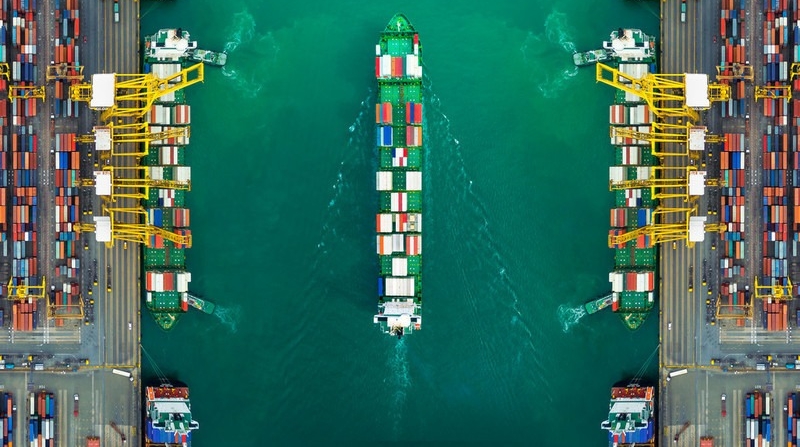The Lloyd’s Register Maritime Decarbonisation Hub and eleven cross-supply chain stakeholders are launching ‘The Silk Alliance’. Goal of the alliance is to develop a Green Corridor Cluster beginning with intra-Asia container trade.
Initiated by the Lloyd’s Register Maritime Decarbonisation Hub, The Silk Alliance brings together a diverse group of organisations whose collaboration can advance the decarbonisation of the maritime industry. These include shipowners, such as MSC Shipmanagement, Pacific International Lines (PIL), Wan Hai Lines, X-Press Feeders, Yang Ming Marine Transport Corp.; shipyard Keppel Offshore & Marine (Keppel O&M); bunker logistical supplier, Singfar International; engine manufacturer, Wärtsilä; ship manager, Wilhelmsen Ship Management; and financial institutions, the Asian Development Bank and ING.
At the outset, these members will collaborate to send an aggregated demand signal for other stakeholders such as fuel providers, port operators and governments to support the Green Corridor Cluster.
A widely accepted definition of “Green Corridors” from the Global Maritime Forum (GMF) is ‘a shipping route on which the technological, economic, and regulatory feasibility of the operation of zero emissions ships is catalysed through public and private actions.’
Also read: Lloyd’s Register gives AiP for China’s first ammonia-powered Newcastlemax bulk carrier
Fleet-specific fuel transition strategy
The Silk Alliance members will draw from their individual areas of expertise to develop a fleet-specific fuel transition strategy for container ships operating primarily in Asia, based on the Lloyd’s Register Maritime Decarbonisation Hub’s First Mover Framework. This is designed to strengthen leadership and foster collaboration in the maritime industry to meet its COP26 commitments and to demonstrate tangible actions that can lower the investment risk that is currently preventing the wider uptake of sustainable carbon-neutral fuels.
The initiative is named after the maritime section of the historic Silk Road, linking Southeast Asia to China, the Indian subcontinent and the Arabian Peninsula, which expanded over the course of centuries to incorporate new technologies and cultures. The cross-supply chain collaboration is dedicated to delivering learnings to enable safe, commercially viable and sustainable marine transport in support of the industry’s long-term strategy to decarbonise international shipping by 2050.
‘The Silk Alliance aims to establish a fleet-specific decarbonisation strategy and green corridor implementation plan that encompasses key links in the maritime supply network which are critical to providing maritime players of all sizes with the resources to transition to carbon neutral fuels and vessels,’ says Charles Haskell, Lloyd’s Register’s Decarbonisation Programme Manager.
Also read: LR machine learning tech reveals that main cause of lifeboat accidents is failing equipment








